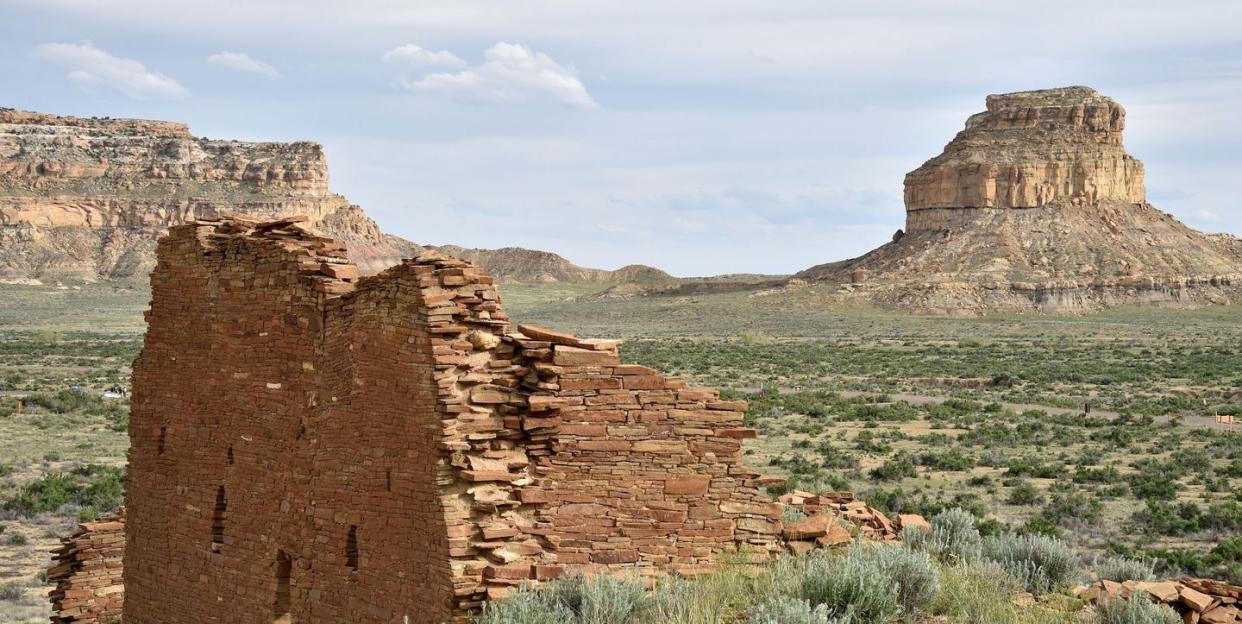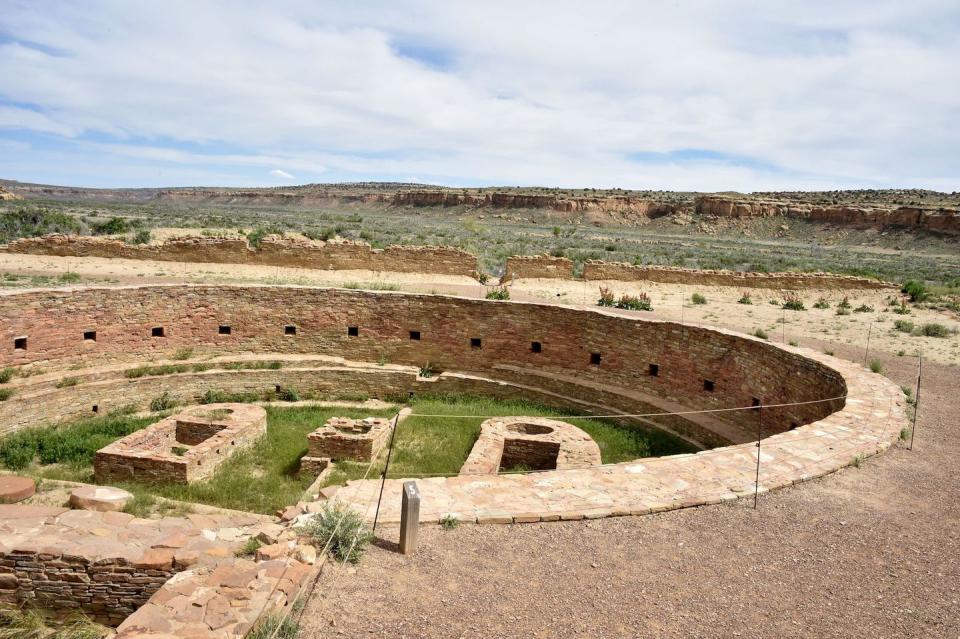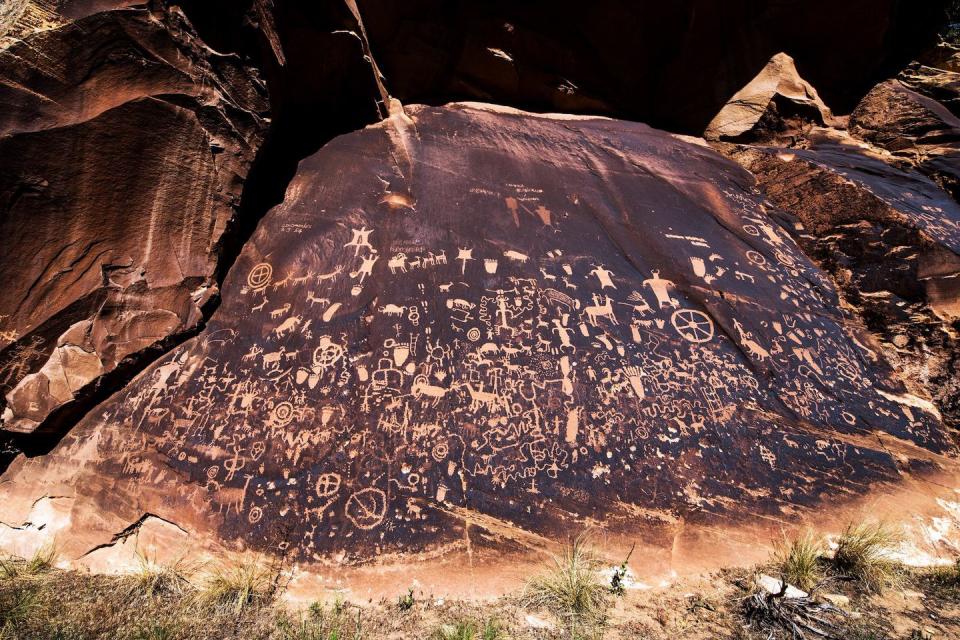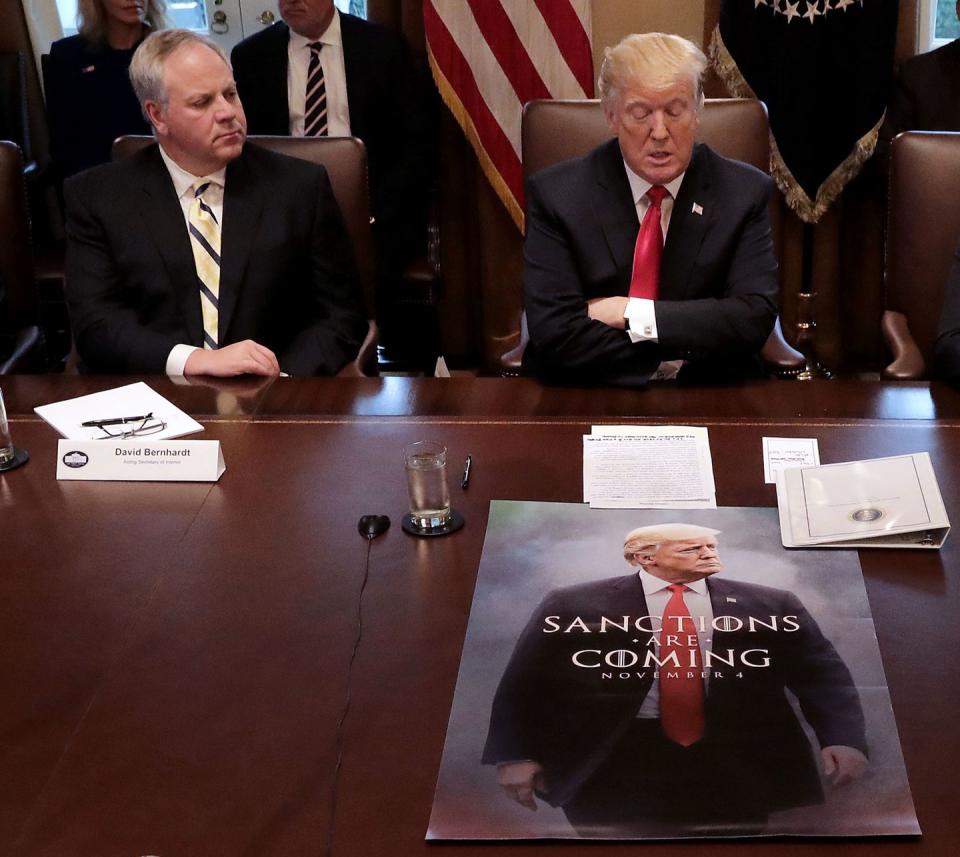Surely Not Every Piece of American Land Deserves an Oil Derrick

One consequence of The Great American Heist is that the public lands belonging to the people of the United States of America are up for sale. Yes, when you populate the Executive Branch with operators whose conception of public service consists of livin' good while serving the priorities of wealthy special interests, the results are not always going to line up with the interests of the American public at large.
Cue the planned changes to the area around Chaco Culture National Historical Park, courtesy of the AP via NBC News:
U.S. land managers will move forward in March with the sale of oil and gas leases that include land near Chaco Culture National Historical Park and other sites sacred to Native American tribes.
The sale comes as Democratic members of Congress, tribal leaders and environmentalists have criticized the federal Bureau of Land Management for pushing ahead with drilling permit reviews and preparations for energy leases despite the recent government shutdown. With limited staff on duty over the last month, the critics complained that they were locked out of the process because the agency didn't release any information about the sale.
Chaco is a UNESCO World Heritage Site, "a major centre of ancestral Pueblo culture between 850 and 1250" that was "a focus for ceremonials, trade and political activity for the prehistoric Four Corners area. Chaco is remarkable for its monumental public and ceremonial buildings and its distinctive architecture-it has an ancient urban ceremonial centre that is unlike anything constructed before or since." It is also a stunning testament to the astronomical capabilities of the ancient peoples who lived there: the roads and structures in Chaco Canyon appear to align with celestial configurations. It is a monument to some of the earliest known achievements of the human race.

Obviously, nobody is going to put an oil derrick on top of the central structures. But these lands are sacred to the Native peoples whose families have been here for hundreds if not thousands of years. Drilling nearby could disturb the integrity of the sites, which is why there has for some time been a "buffer zone" of 10 miles around the National Historic Park where oil and gas exploration was forbidden. Even Trump's first Secretary of the Interior, Ryan Zinke, halted a lease sale nearby in early 2018 after protests.
And Zinke was mostly quite forward about all this. He was jetting around at taxpayer expense, or sometimes on private jets owned by oil and gas executives, while his department saw fit to (accidentally) leak internal emails showing they were tailoring their assessments of protected areas "to emphasize the value of logging, ranching and energy development that would be unlocked if they were not designated national monuments." That is to say, they were downplaying environmental and Native community concerns, and boosting the relative commercial appeal, to more efficiently put it all up for sale.

In 2017, the Interior Department moved to shrink the size of the Bears Ears National Monument, a sprawling area of natural wonder that's also home to ancient Native American sites, by 85 (eighty-five!) percent. The New York Times found, via leaked emails, that this decision was centrally driven by oil interests. The decision also came after lobbying from uranium mining firms looking to exploit deposits in the area-companies that were represented by, among others, then-lobbyist Andrew Wheeler. He is now the acting administrator of the Environmental Protection Agency.

Zinke has now been run out of Interior amid White House fears that the new Democratic House would investigate him to oblivion. His acting replacement, David Bernhardt, is so deeply entangled with energy and agricultural interests from his recently-former gig as a lobbyist that he carries around a card listing 22 companies he is recused from dealing with. (Other recusals have expired, prompting him to jump into action in ways that sometimes just happen to line up with the priorities of those interests.) With the impending sale of oil and gas leases near Chaco, it seems like it will all continue in an orderly fashion, though Bernhardt seems to be a quieter operator than his predecessor.
But what's at stake here is not just another piece of Trumpist malfeasance. Any Republican president would probably have adopted a similar approach to public lands, favoring energy interests over environmental or anthropological concerns-though probably not so shamelessly. While the United States of America owes centuries-worth of penance to indigenous peoples, you don't even need to prioritize Native American land rights and cultural heritage to oppose encroaching on these areas.
We as a people must decide whether exploiting the natural wonders of the North American continent is always worth it to pump a little more energy out of the ground and put a little more money in somebody's pocket. Is it worth running up against the cave writings scrawled by the ancient peoples of this land with the machines of oil and gas exploration? Is it worth drilling anywhere near the kaleidoscopic hues of the rock formations at Bears Ears? We can always find more energy, but there are some things you can never get back. Surely we can leave some of this magnificent continent untouched by derricks or strip malls. Surely something is sacred beyond the almighty dollar.
('You Might Also Like',)

